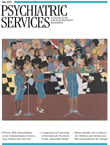John Oldham Is President-Elect, Carol Bernstein Begins APA Presidency
Members of the American Psychiatric Association (APA) elected John Oldham, M.D., president-elect of the association. Dr. Oldham is chief of staff at the Menninger Clinic and a professor of psychiatry at Baylor College of Medicine in Houston. He is also president of the American College of Psychiatrists. In the two-way race for president-elect, Dr. Oldham won 54% of the vote, with 46% going to his opponent Donna Norris, M.D.
Dr. Oldham will officially become president-elect on May 26, at the close of APA's annual meeting, when Carol Bernstein, M.D., will succeed Alan Schatzberg, M.D., as APA president. Dr. Bernstein is associate professor of psychiatry and associate dean for graduate medical education at New York University School of Medicine.
Other APA positions up for election this year were treasurer and secretary—formerly combined positions that became separate positions in this election. Incumbent David Fassler, M.D., received 53% of the votes in the race for treasurer against Paul Summergrad, M.D. The office of secretary went to Roger Peele, M.D., who outpolled Fred Gottlieb, M.D., with 53% of the vote.
A total of 9,374 members voted in the 2010 election, or 31.5% of eligible voters—a percentage that has remained flat for three elections. The proportion of voters submitting online instead of paper ballots increased to 50%—up from 42% in the 2009 election and 31% in 2008.



